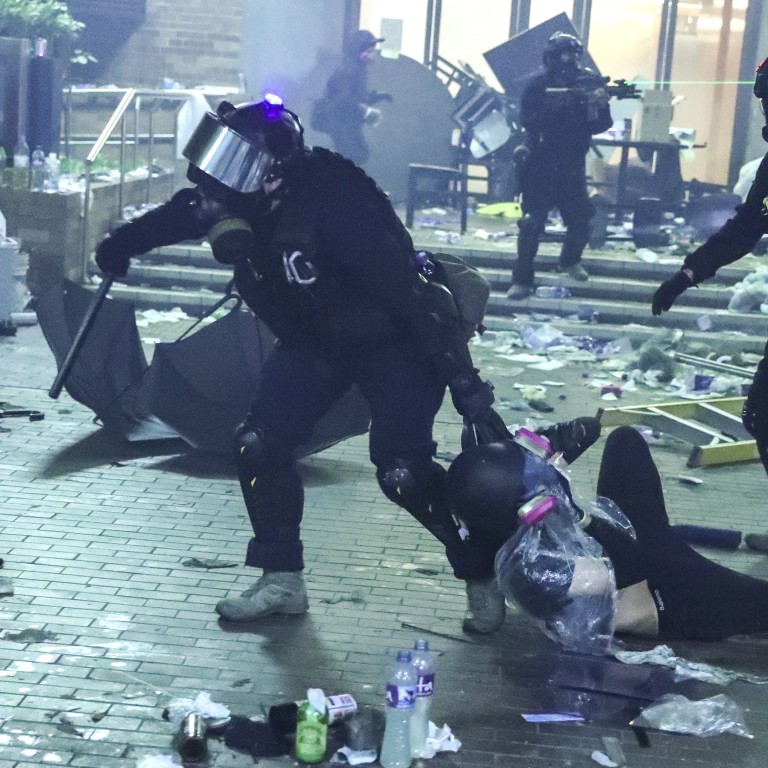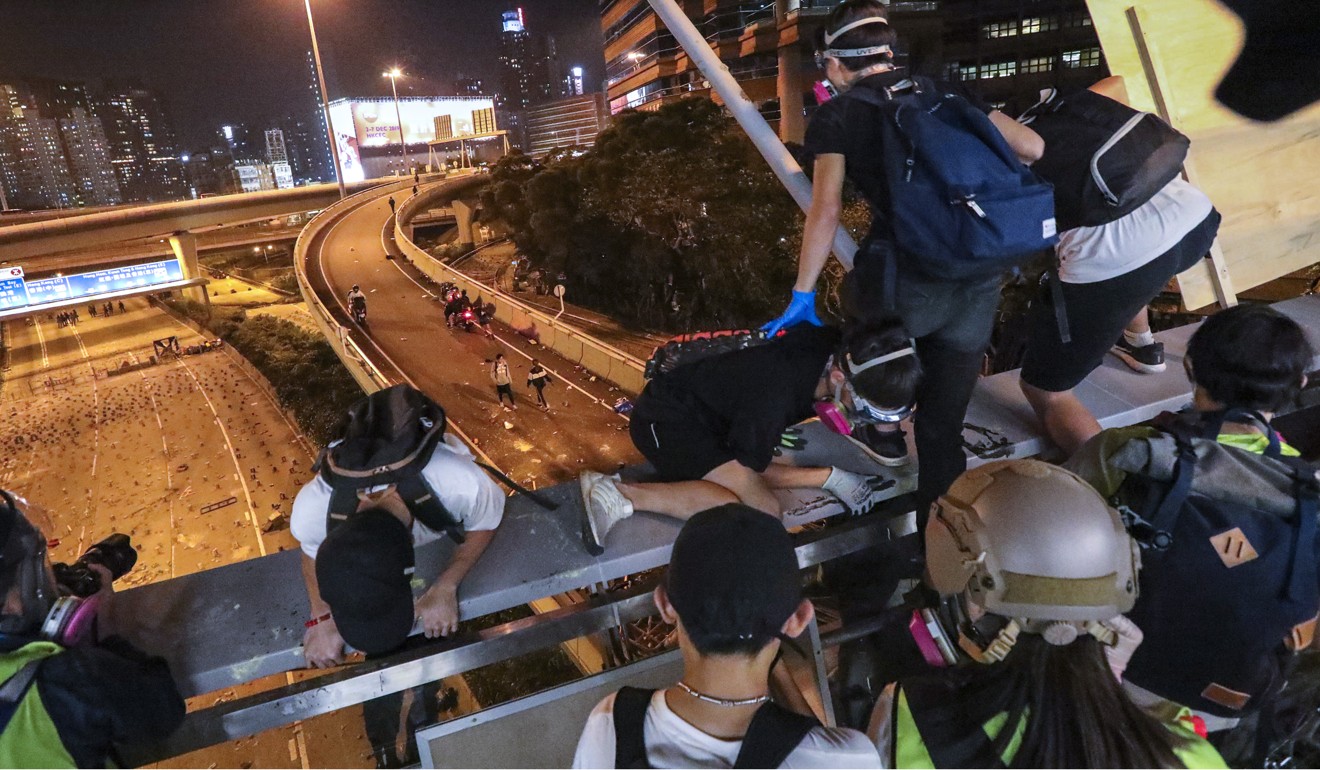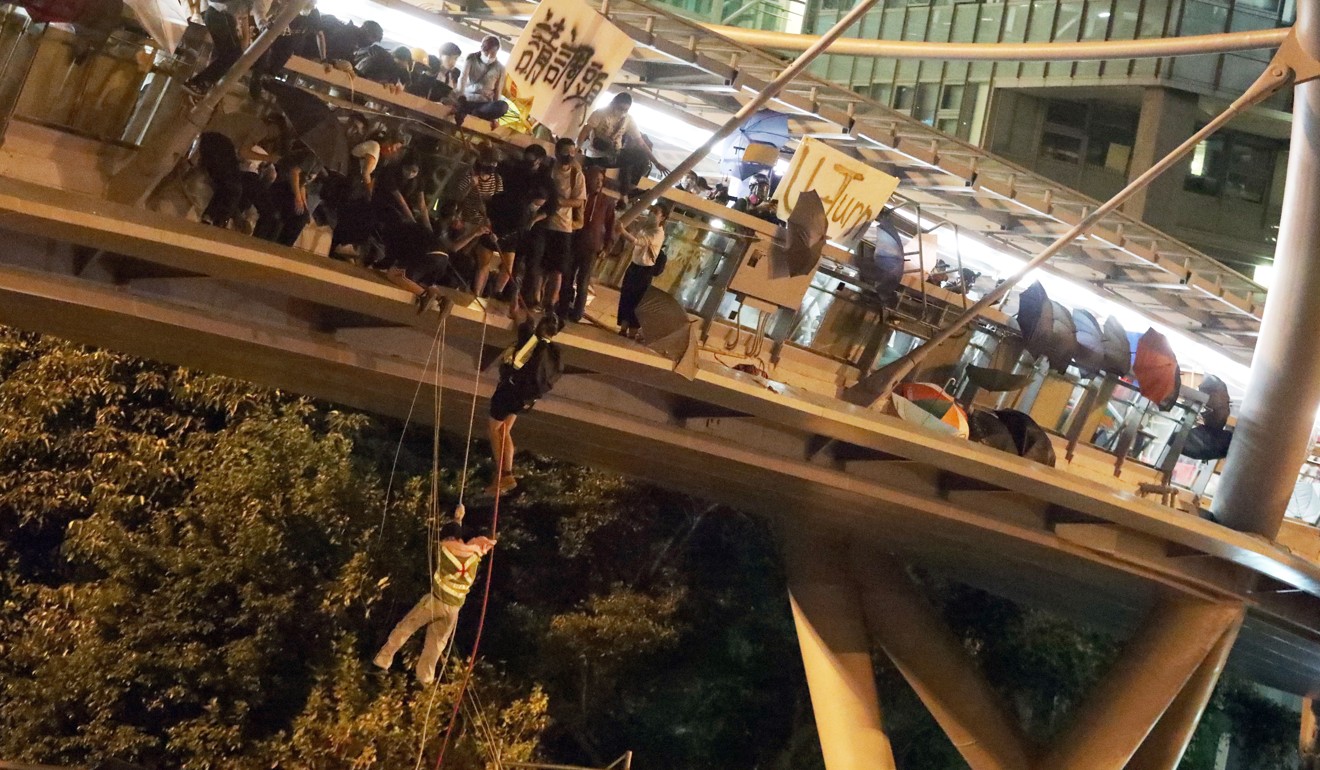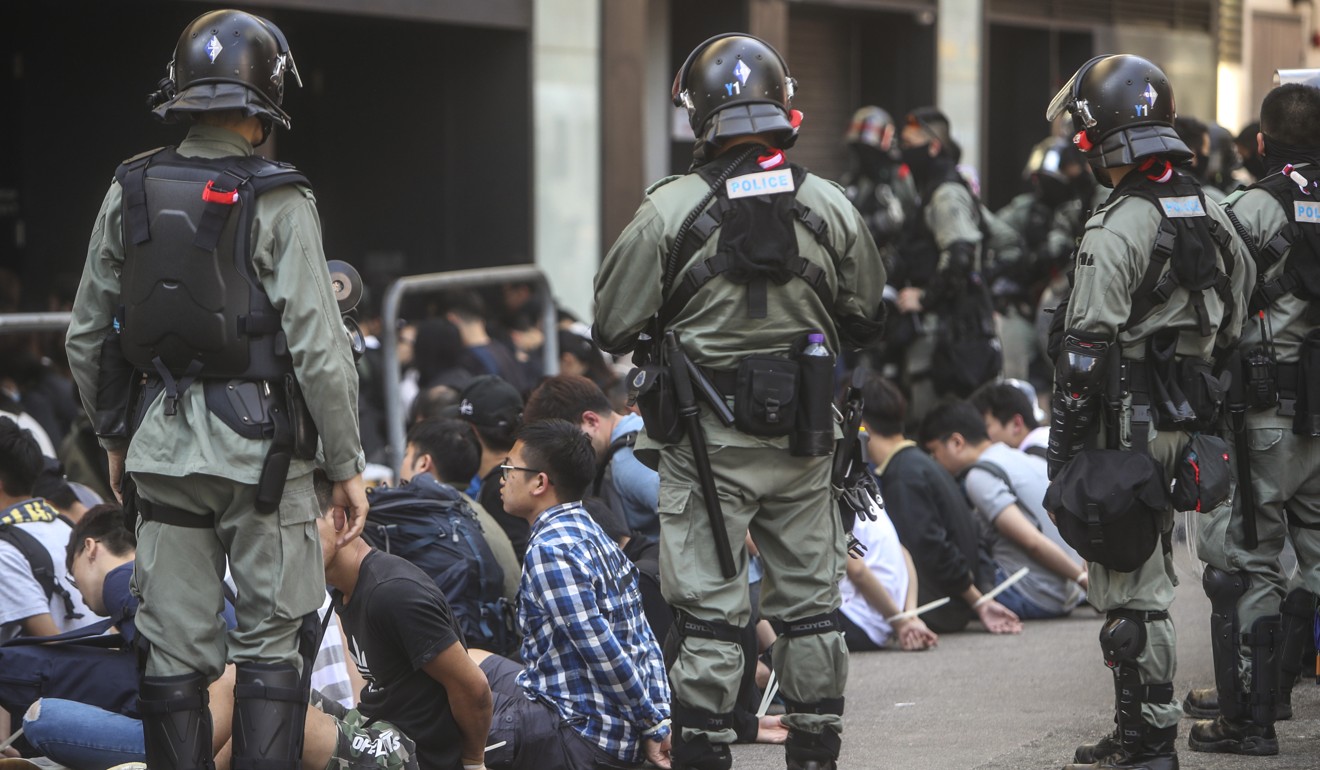
Hong Kong protests: university campus stand-off between radicals and riot squad shows no sign of ending as thousands hit streets in bid to relieve police siege
- About 40 injured activists were allowed to leave Polytechnic University campus to get treatment, although they might still face charges later
- Dozens slip through police lines and escape under cover of night by using ropes to descend from a footbridge to a highway and ride away on motorcycles
About 40 injured activists were allowed to leave the campus to get treatment, although they might still face charges later. Others, except for accredited journalists, were told they would be arrested once they stepped out.
A police source said those who surrendered without a fight could expect lenient punishment, but all entrapped protesters had to answer to the law.
With police showing no intention of storming the campus and besieged activists unwilling to give up, a stalemate ensued.
Former Legislative Council president Jasper Tsang Yok-sing and University of Hong Kong legal scholar Eric Cheung Tat-ming entered the PolyU campus with a police escort at around 11pm.
When asked about the visit, Tsang said he was there to “help those who want to leave”.
Earlier attempts by various groups to negotiate a peaceful solution failed. University board directors, teachers, parents and lawmakers trying to enter the campus were turned back by officers.
At nightfall, thousands of the radicals’ supporters who gathered in Jordan and Tsim Sha Tsui tried to relieve the police siege by force.
They battled riot officers in the bustling streets of central Kowloon throughout the night, with tear gas and petrol bombs exchanged at rapid intervals.

Those who stayed on the campus in Hung Hom also tried to break out and leave en masse. But they were quickly met by rounds of tear gas fired by police guarding several entrances.
In the evening, dozens managed to slip through the police line and escape. Under cover of night, they used ropes to descend from a campus footbridge to a highway and were picked up by motorcycles and driven away.


By Monday night, several hundred activists and some first aiders were still trapped inside the campus.
This came after extremely violent clashes between masked radicals occupying the campus and police on Sunday.
Chief Secretary Matthew Cheung Kin-chung, the city’s No 2 official, on Monday said the nature of the movement had changed from opposing the now-withdrawn extradition bill to “destroying Hong Kong”.
Many besieged activists were teenagers or secondary school students. Their anxious parents staged a sit-in near the campus in Tsim Sha Tsui East as the stand-off showed no sign of easing.
A mother burst into tears as she searched Queen Elizabeth Hospital in Jordan looking for her son, a Form Six student. His teacher and friends earlier told her the boy had been seriously injured after taking part in the conflict at PolyU. It was not clear if he left the campus.
“He was at home [on Sunday] before I went to work. I have no idea where he went but he did not come back,” she said. “He’s only 17 and he might not recover if no treatment is done. I prefer that he gets arrested than seeing him die.”
The hospital said it had no record of her son’s admission.
Meanwhile, on the campus, Jasper Tsang and Eric Cheung first met a group of volunteers and some of those they had helped, and offered to leave together with them.

Cheung said that while they could not guarantee the activists would not be arrested after they stepped out of the campus, he said they could ensure their personal safety.
“I don’t think this retreat is a surrender. If there is any arrest, I’d also question what evidence the police have,” Cheung said.
Tsang added: “I can guarantee that if we leave together, you won’t face any rough treatment.”
The group later said they needed to have a discussion among themselves first.
Missing chemicals from universities spark fears over public safety
The tense stand-off at the campus has made Hong Kong the focus of the world again.
A spokesman for Britain’s foreign office said London was “seriously concerned by the escalation in violence by both sides”.
“It is vital that those who are injured are able to receive appropriate medical treatment, and that safe passage is made available for those who wish to leave the area,” he said, adding that all sides should engage in political dialogue to defuse the tension.

Chinese ambassador to Britain Liu Xiaoming blamed protesters for unleashing “black terror” and urged British politicians to condemn calls for Hong Kong independence more forcefully.
The stand-off also means the Cross-Harbour Tunnel, which links Hong Kong Island to Kowloon, will remain closed. It has been down for days after the radicals set fire to toll booths and overhead bridges.
Secretary for Transport and Housing Frank Chan Fan said the government would ask ferry operators to run services between Hung Hom and Wan Chai, as well as between Kowloon City and Wan Chai, free of charge.
Reporting by Sum Lok-kei, Karen Zhang, Gary Cheung, Chris Lau and Danny Mok

